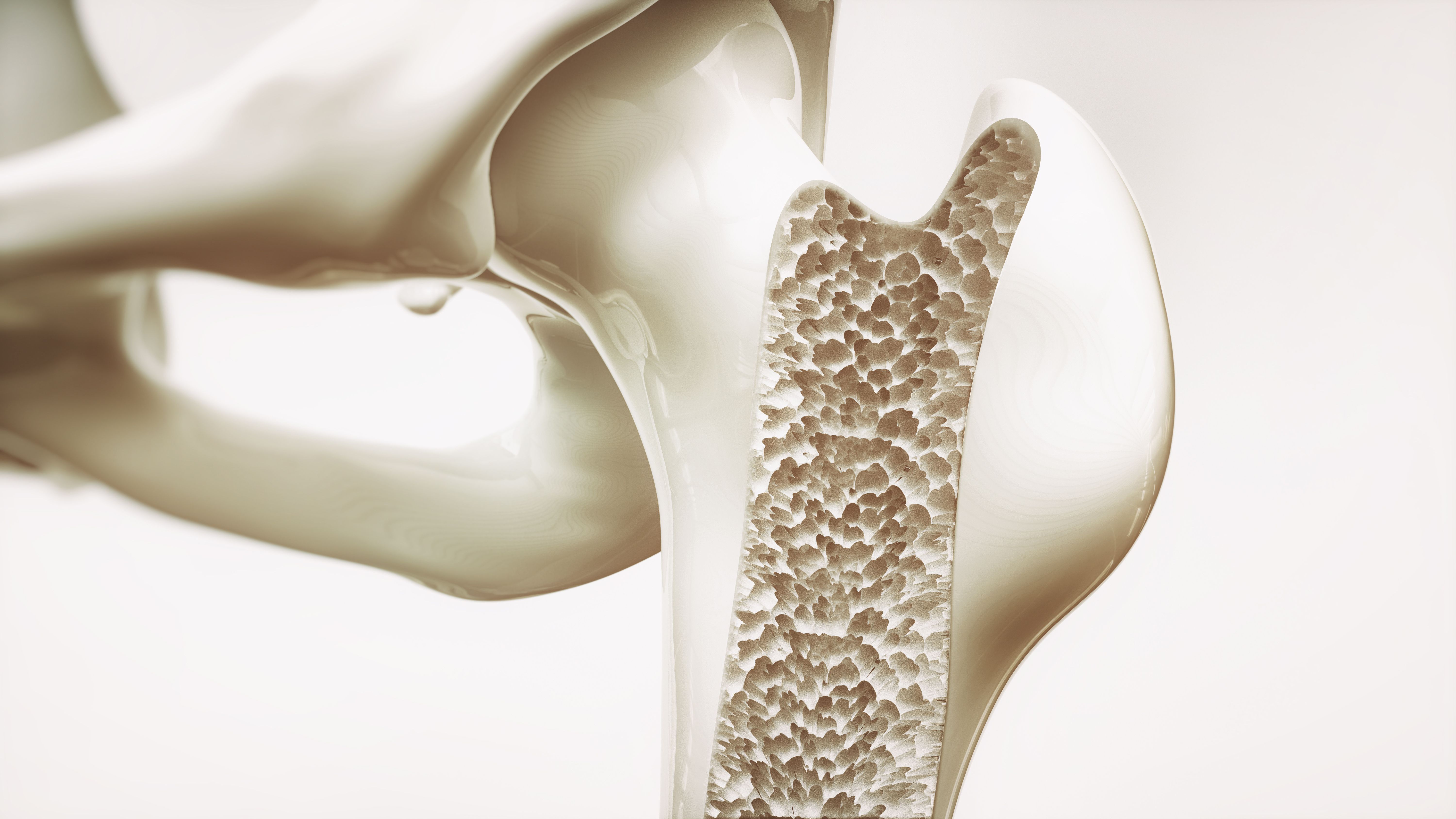Article
Gout Linked to Higher Risk of Developing Osteoporosis
Author(s):
Results indicated that the incidence of osteoporosis increased up to 4 times in younger male patients with gout when compared with those without gout.
Gout was significantly associated with the risk of osteoporosis, with an increased incidence of up to 4 times in male patients with gout in their 20s when compared with those without gout, according to a study published in Medicine.1

“Uric acid acts as both an antioxidant and a pre-oxidant that induces oxidative stress; thus, it plays a paradoxical role in inflammation,” investigators explained. “However, the effect of gout, a hallmark of hyperuricemia, on osteoporosis remains unclear.”
The Korean National Health Insurance Service (NHIS) database was used to collect data from 628,565 patients with gout on treatment (colchicine, febuxostat, allopurinol, and benzbromarone) for at least 90 days in this retrospective cohort study. The NHIS includes information on demographics, health insurance, International Classification of Diseases-10 (ICD-10), prescription records, and healthcare utilization. Patients were then compared with a control group of patients with no history of gout. 1:1 age and sex matched patients and Cox proportional hazards models assessed risk factors for developing osteoporosis.
Ultimately, 305,810 patients with gout (ICD-10, M10) were included in the study. Gout was most prevalent in the 40-49 age group and only 3.62% of patients with a gout diagnosis were women. Further, the percentage of comorbidities was higher in patients with gout when compared with the control cohort (P < .001).
Results indicated that patients with gout had an increased incidence rate of developing osteoporosis when compared with those without gout (10.6 vs 7.95, respectively), with an incidence rate ratio (IRR) of 1.33 (95% CI: 1.31–1.36). In the sex stratified analysis, both men (IRR 1.38; 95% CI: 1.35–1.40) and women (IRR 1.21; 95% CI: 1.16–1.27) with gout had an increased IRR of osteoporosis when compared with controls. The stratified analysis by age showed that gout increased the incidence ratio in all age groups except for those over 80 years of age (P < .001). There was an increased hazard ratio of 1.48 (95% CI: 1.45–1.51, P < .001). Patients in their 70s had the highest hazard ratio ([HR]: 20.93; 95% CI: 19.55–22.41, P < .001), and the female sex was also a risk factor for osteoporosis (HR: 4.49; 95% CI: 4.38–4.61; P < .001).
Evaluating the link between gout and osteoporosis by utilizing a large-scale insurance database strengthened the study, as did defining gout using both the ICD diagnosis code and gout-specific medication. Additionally, the sub-analyses according to age and sex were possible because investigators were able to acquire demographic and clinical information of patients. However, they were unable to obtain serum uric acid levels, body mass index (BMI), or bone mineral density (BMD).
“Although the effect is much smaller than that of age and female sex, which are the typical risk factors for osteoporosis, it is true that gout has a significant effect on osteoporosis compared with other common comorbidities, such as hypertension and diabetes constituting metabolic syndrome,” investigators concluded. “In particular, the results of this study showed that the incidence of osteoporosis increased up to 4 times in younger male patients in their 20s with gout compared to without gout, despite having conditions in which bone density is expected to be the highest. Therefore, when the patients have been diagnosed with gout at a young age, it is recommended to actively screen for osteoporosis.”
Reference:
Kim JH, Kim SR, Kang G, Choi IA. Gout as a risk factor for osteoporosis: A Korean population-based study. Medicine (Baltimore). 2022;101(45):e31524. doi:10.1097/MD.0000000000031524




